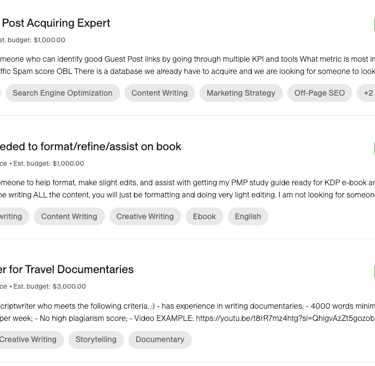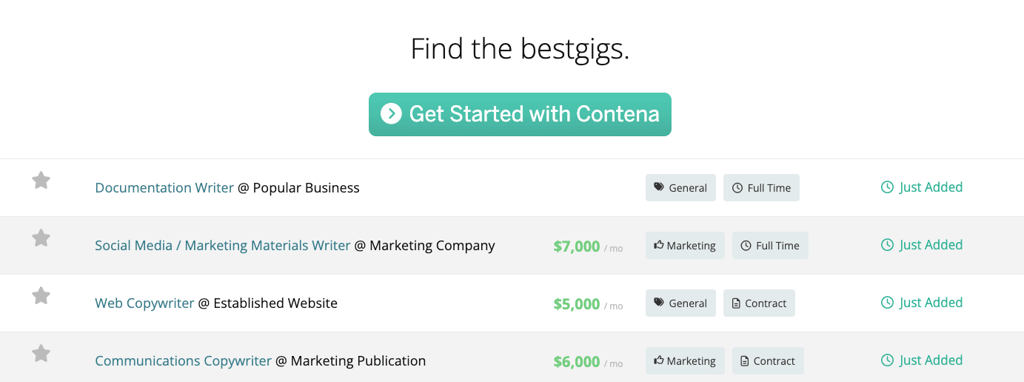How to Build a $5,000 Monthly Income with Online Freelancing (Step-by-Step Guide)


Freelancing has become one of the most accessible ways to earn a substantial income online, offering the flexibility to work from anywhere and choose projects that interest you. If you’re ready to dive in and make $5,000 or more each month, this step-by-step guide will walk you through exactly how to get there—from choosing a niche to landing high-paying clients.
Step 1: Choose a High-Demand Freelance Niche
Selecting a profitable niche is key to standing out in the freelance world. While general skills can get you work, specializing in a specific niche makes you more valuable to clients who need that particular expertise.
Popular Niches: Writing (especially SEO and technical writing), graphic design, social media management, web development, digital marketing, and virtual assistance are all in high demand.
Market Research: Look at job boards like Upwork, Fiverr, and LinkedIn to see which services are in demand. Note the rates being offered for different skill levels, as this can give you a realistic view of potential earnings.
Tip: Choose a niche that aligns with both your interests and market demand. When you enjoy what you do, it’s easier to stay motivated as you build your client base.


Step 2: Build a Strong Portfolio with Sample Work
A portfolio is your virtual showcase—clients want to see examples of your work before they hire you. If you’re just starting, build sample pieces that demonstrate your skills and quality.
Create Sample Projects: For writers, this could be sample blog posts or product descriptions; for designers, mock-up logos or website templates. Even if they’re not client-based, well-done samples can still show your abilities.
Portfolio Websites: Use platforms like Behance, Dribbble (for designers), or Clippings.me (for writers) to showcase your work. Creating a simple website on Hostinger, WordPress or Wix is also a good idea to keep all your samples in one place.
Add Case Studies: If you’ve done any freelance work, even for friends or small businesses, consider adding brief case studies that outline what you achieved. These help show your value and results-oriented approach
Tip: Keep your portfolio updated with new work and organized by project type. This makes it easy for clients to navigate and find relevant examples.


Step 3: Sign Up on the Right Freelance Platforms
Freelance platforms connect you with clients and are often the easiest way to start getting paid. While there are many to choose from, finding the ones that fit your niche and goals can make a big difference in reaching your income target.
Platforms for Beginners: Upwork and Fiverr are popular choices for those just starting. Fiverr works well for quick tasks and beginners, while Upwork has more complex projects that often pay higher rates.
Specialized Platforms: If you’re in a niche like writing, try platforms like ProBlogger or Contena. For tech and development, Toptal and Gun.io are known for high-quality projects and higher pay rates.
Direct Clients through LinkedIn: Building a LinkedIn profile that showcases your skills and experience can attract clients directly without going through a platform. LinkedIn is especially effective for professional services like consulting, copywriting, and social media management.
Tip: Start on two or three platforms to avoid spreading yourself too thin. Once you’ve built up a steady stream of clients, you can focus on the platform(s) that offer the best-paying work.


Step 4: Set Competitive, Yet Realistic Rates
Setting your rates can be challenging, especially as a beginner. Aim to find a balance between competitive pricing and earning what your skills are worth.
Hourly vs. Project Rates: For beginners, an hourly rate can be a good place to start ($15-$30 per hour is typical). As you gain experience, switch to project-based rates, which allow you to earn more by completing tasks faster.
Research Market Rates: Check what others in your niche are charging on different freelance platforms. Knowing the average helps you set a competitive rate without undervaluing yourself.
Raise Rates Gradually: After you’ve built up experience and have some positive client feedback, begin raising your rates. Don’t be afraid to increase rates with each new client or project, especially if you’re producing high-quality work.
Tip: If a client balks at your rate, highlight the unique value you bring. Explain how your expertise will save them time, increase quality, or otherwise benefit them.
Step 5: Land Your First Clients and Build Relationships
Your first clients are crucial for building confidence, getting feedback, and generating positive reviews. Once you’ve landed your first few clients, focus on building strong relationships to encourage repeat business.
Start with Smaller Projects: Smaller gigs are easier to land when you’re new. Look for entry-level projects, even if they pay slightly lower, to start building your reputation.
Overdeliver: Go the extra mile with these initial clients by delivering a bit earlier or adding a small bonus. This creates a positive impression and often leads to repeat work.
Ask for Reviews: Positive reviews on freelance platforms increase your credibility. Politely ask clients to leave a review or testimonial upon successful project completion.
Tip: Communication is key to long-term client relationships. Be responsive, open to feedback, and clear about timelines and project details.


Step 6: Create a Professional Online Presence
A professional online presence is essential for establishing credibility. It can also help attract direct clients, who often pay more than clients on freelance platforms.
LinkedIn Profile: Optimize your LinkedIn profile with a clear headline, a concise summary of your skills, and portfolio links. Engage with industry posts to stay visible in your niche.
Social Media Presence: Use social platforms like Twitter, Instagram (for designers), or Facebook to share your work and insights. Engaging with potential clients or industry leaders can increase your visibility.
Tip: Consistently post relevant content, whether it’s samples of your work or insights into your industry, to stay top-of-mind for clients who may need your services.
Step 7: Refine Your Process and Increase Efficiency
To reach a $5,000 monthly income, you’ll need to optimize your workflow. This means streamlining the way you handle client communication, project management, and time tracking.
Use Project Management Tools: Tools like Trello, Asana, or Notion can help you organize client projects, set deadlines, and track progress.
Time Tracking: Apps like Toggl or Clockify help you keep track of hours worked, especially useful for hourly billing. They can also reveal how much time you spend on specific tasks, which helps in adjusting your rates.
Automate Repetitive Tasks: From setting up templates for emails to using invoicing software, automating tasks can save you valuable time.
Tip: Document your processes. Having a clear workflow not only saves time but also helps you onboard new clients more efficiently.
Step 8: Look for High-Paying Clients
High-paying clients value quality over quantity and are willing to pay for reliable freelancers. Once you have a solid reputation, actively seek out these clients.
Networking: Connect with other freelancers in your niche. Many times, experienced freelancers refer projects to others when they’re fully booked.
Direct Outreach: Identify companies you’d like to work with and send a personalized pitch explaining how you can add value. Reaching out directly shows initiative and may lead to lucrative contracts.
Client Retainer Agreements: Aim to convert one-time projects into monthly retainers. For example, if you’re a content writer, offer ongoing blog posts; if you’re a graphic designer, suggest a monthly design package.
Tip: Emphasize how your work has driven results for past clients, as high-paying clients are interested in hiring freelancers who can show measurable impact.
Step 9: Consistently Deliver High-Quality Work
Maintaining a high standard of work ensures repeat clients and referrals, which are essential for sustaining a steady income.
Set Clear Expectations: Always clarify project scope, deadlines, and deliverables at the start of each project. Miscommunication can lead to scope creep, costing you time and money.
Focus on Quality: High-quality work is memorable and can lead to referrals. Consistently strive to improve your skills and adapt to client feedback.
Seek Feedback: After each project, ask clients for feedback. It not only helps you improve but also strengthens your client relationship.
Tip: Create a post-project follow-up email that invites clients to leave feedback or discuss future project opportunities. This keeps the door open for more work.
Final Thoughts: Can You Really Build a $5,000 Monthly Income from Freelancing?
Reaching a $5,000 monthly income with freelancing is achievable with persistence and a strategic approach. Start by selecting a niche, build a strong portfolio, and set competitive rates. As you build experience, look for high-paying clients and optimize your workflow to handle projects efficiently. By following these steps, you’ll be well on your way to building a full-time freelancing career that pays.
Remember, freelancing success often grows over time—so stay consistent, keep learning, and enjoy the journey!


